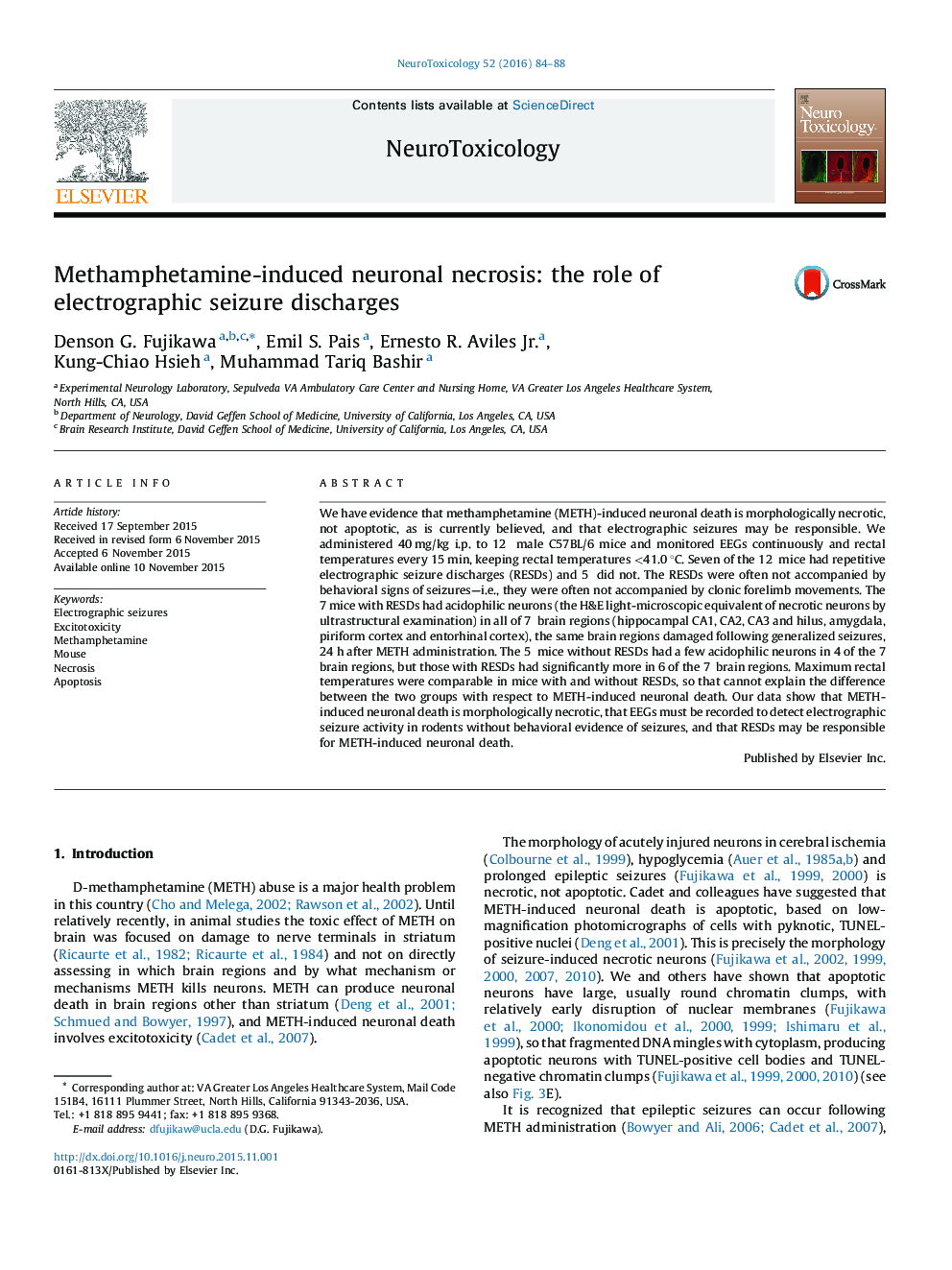| Article ID | Journal | Published Year | Pages | File Type |
|---|---|---|---|---|
| 5854662 | NeuroToxicology | 2016 | 5 Pages |
Abstract
We have evidence that methamphetamine (METH)-induced neuronal death is morphologically necrotic, not apoptotic, as is currently believed, and that electrographic seizures may be responsible. We administered 40 mg/kg i.p. to 12 male C57BL/6 mice and monitored EEGs continuously and rectal temperatures every 15 min, keeping rectal temperatures <41.0 °C. Seven of the 12 mice had repetitive electrographic seizure discharges (RESDs) and 5 did not. The RESDs were often not accompanied by behavioral signs of seizures-i.e., they were often not accompanied by clonic forelimb movements. The 7 mice with RESDs had acidophilic neurons (the H&E light-microscopic equivalent of necrotic neurons by ultrastructural examination) in all of 7 brain regions (hippocampal CA1, CA2, CA3 and hilus, amygdala, piriform cortex and entorhinal cortex), the same brain regions damaged following generalized seizures, 24 h after METH administration. The 5 mice without RESDs had a few acidophilic neurons in 4 of the 7 brain regions, but those with RESDs had significantly more in 6 of the 7 brain regions. Maximum rectal temperatures were comparable in mice with and without RESDs, so that cannot explain the difference between the two groups with respect to METH-induced neuronal death. Our data show that METH-induced neuronal death is morphologically necrotic, that EEGs must be recorded to detect electrographic seizure activity in rodents without behavioral evidence of seizures, and that RESDs may be responsible for METH-induced neuronal death.
Related Topics
Life Sciences
Environmental Science
Health, Toxicology and Mutagenesis
Authors
Denson G. Fujikawa, Emil S. Pais, Ernesto R. Jr., Kung-Chiao Hsieh, Muhammad Tariq Bashir,
